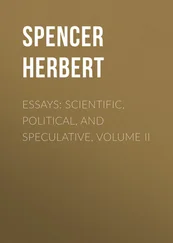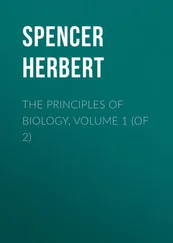One further verification may be drawn from facts which are obstacles to the converse hypothesis. These objects and powers, celestial and terrestrial, which force themselves most on men's attention, have some of them several proper names, identified with those of different individuals, born at different places, and having different sets of adventures. Thus we have the sun variously known as Apollo, Endymion, Helios, Tithonos, etc.—personages having irreconcilable genealogies. Such anomalies Prof. Max Müller apparently ascribes to the untrustworthiness of traditions, which are "careless about contradictions, or ready to solve them sometimes by the most atrocious expedients." ( Chips , vol. ii., p. 84.) But if the evolution of the myth has been that above indicated, there exists no anomalies to be got rid of: these diverse genealogies become parts of the evidence. For we have abundant proof that the same objects furnish metaphorical names of men in different tribes. There are Duck tribes in Australia, in South America, in North America. The eagle is still a totem among the North Americans, as Mr. McLennan shows reason to conclude that it was among the Egyptians, among the Jews, and among the Romans. Obviously, for reasons already assigned, it naturally happened in the early stages of the ancient races, that complimentary comparisons of their heroes to the Sun were frequently made. What resulted? The Sun having furnished names for sundry chiefs and early founders of tribes, and local traditions having severally identified them with the Sun, these tribes, when they grew, spread, conquered, or came otherwise into partial union, originated a combined mythology, which necessarily contained conflicting stories about the Sun-god, as about its other leading personages. If the North-American tribes, among several of which there are traditions of a Sun-god, had developed a combined civilization, there would similarly have arisen among them a mythology which ascribed to the Sun several different proper names and genealogies.
Let me briefly set down the leading characters of this hypothesis which give it probability.
True interpretations of all the natural processes, organic and inorganic, that have gone on in past times, habitually trace them to causes still in action. It is thus in Geology; it is thus in Biology; it is thus in Philology. Here we find this characteristic repeated. Nicknaming, the inheritance of nicknames, and to some extent, the misinterpretation of nicknames, go on among us still; and were surnames absent, language imperfect, and knowledge as rudimentary as of old, it is tolerably manifest that results would arise like those we have contemplated.
A further characteristic of a true cause is that it accounts not only for the particular group of phenomena to be interpreted, but also for other groups. The cause here alleged does this. It equally well explains the worship of animals, of plants, of mountains, of winds, of celestial bodies, and even of appearances too vague to be considered entities. It gives us an intelligible genesis of fetichistic conceptions in general. It furnishes us with a reason for the practice, otherwise so unaccountable, of moulding the words applied to inanimate objects in such ways as to imply masculine and feminine genders. It shows us how there naturally arose the worship of compound animals, and of monsters half man, half brute. And it shows us why the worship of purely anthropomorphic deities came later, when language had so far developed that it could preserve in tradition the distinction between proper names and nicknames.
A further verification of this view is, that it conforms to the general law of evolution: showing us how, out of one simple, vague, aboriginal form of belief, there have arisen, by continuous differentiations, the many heterogeneous forms of belief which have existed and do exist. The desire to propitiate the other self of the dead ancestor, displayed among savage tribes, dominantly manifested by the early historic races, by the Peruvians and Mexicans, by the Chinese at the present time, and to a considerable degree by ourselves (for what else is the wish to do that which a lately-deceased parent was known to have desired?) has been the universal first form of religious belief; and from it have grown up the many divergent beliefs which have been referred to.
Let me add, as a further reason for adopting this view, that it immensely diminishes the apparently-great contrast between early modes of thought and our own mode of thought. Doubtless the aboriginal man differs considerably from us, both in intellect and feeling. But such an interpretation of the facts as helps us to bridge over the gap, derives additional likelihood from doing this. The hypothesis I have sketched out enables us to see that primitive ideas are not so gratuitously absurd as we suppose, and also enables us to rehabilitate the ancient myth with far less distortion than at first sight appears possible.
These views I hope to develop in the first part of The Principles of Sociology . The large mass of evidence which I shall be able to give in support of the hypothesis, joined with the solutions it will be shown to yield of many minor problems which I have passed over, will, I think, then give to it a still greater probability than it seems now to have.
[29]A critical reader may raise an objection. If animal-worship is to be rationally interpreted, how can the interpretation set out by assuming a belief in the spirits of dead ancestors—a belief which just as much requires explanation? Doubtless there is here a wide gap in the argument. I hope eventually to fill it up. Here, out of many experiences which conspire to generate this belief, I can but briefly indicate the leading ones: 1. It is not impossible that his shadow, following him everywhere, and moving as he moves, may have some small share in giving to the savage a vague idea of his duality. It needs but to watch a child's interest in the movements of its shadow, and to remember that at first a shadow cannot be interpreted as a negation of light, but is looked upon as an entity, to perceive that the savage may very possibly consider it as a specific something which forms part of him. 2. A much more decided suggestion of the same kind is likely to result from the reflection of his face and figure in water: imitating him as it does in his form, colours, motions, grimaces. When we remember that not unfrequently a savage objects to have his portrait taken, because he thinks whoever carries away a representation of him carries away some part of his being, we see how probable it is that he thinks his double in the water is a reality in some way belonging to him. 3. Echoes must greatly tend to confirm the idea of duality otherwise arrived at. Incapable as he is of understanding their natural origin, the primitive man necessarily ascribes them to living beings—beings who mock him and elude his search. 4. The suggestions resulting from these and other physical phenomena are, however, secondary in importance. The root of this belief in another self lies in the experience of dreams. The distinction so easily made by us between our life in dreams and our real life, is one which the savage recognizes in but a vague way; and he cannot express even that distinction which he perceives. When he awakes, and to those who have seen him lying quietly asleep, describes where he has been, and what he has done, his rude language fails to state the difference between seeing and dreaming that he saw, doing and dreaming that he did. From this inadequacy of his language it not only results that he cannot truly represent this difference to others, but also that he cannot truly represent it to himself. Hence, in the absence of an alternative interpretation, his belief, and that of those to whom he tells his adventures, is that his other self has been away, and came back when he awoke. And this belief, which we find among various existing savage tribes, we equally find in the traditions of the early civilized races. 5. The conception of another self capable of going away and returning, receives what to the savage must seem conclusive verifications from the abnormal suspensions of consciousness, and derangements of consciousness, that occasionally occur in members of his tribe. One who has fainted, and cannot be immediately brought back to himself (note the significance of our own phrases "returning to himself," etc.) as a sleeper can, shows him a state in which the other self has been away for a time beyond recall. Still more is this prolonged absence of the other self shown him in cases of apoplexy, catalepsy, and other forms of suspended animation. Here for hours the other self persists in remaining away, and on returning refuses to say where he has been. Further verification is afforded by every epileptic subject, into whose body, during the absence of the other self, some enemy has entered; for how else does it happen that the other self, on returning, denies all knowledge of what his body has been doing? And this supposition that the body has been "possessed" by some other being, is confirmed by the phenomena of somnambulism and insanity. 6. What, then, is the interpretation inevitably put upon death? The other self has habitually returned after sleep, which simulates death. It has returned, too, after fainting, which simulates death much more. It has even returned after the rigid state of catalepsy, which simulates death very greatly. Will it not return also after this still more prolonged quiescence and rigidity? Clearly it is quite possible—quite probable even. The dead man's other self is gone away for a long time, but it still exists somewhere, far or near, and may at any moment come back to do all he said he would do. Hence the various burial-rites—the placing of weapons and valuables along with the body, the daily bringing of food to it, etc. I hope hereafter to show that, with such knowledge of the facts as he has, this interpretation is the most reasonable the savage can arrive at. Let me here, however, by way of showing how clearly the facts bear out this view, give one illustration out of many. "The ceremonies with which they [the Veddahs] invoke them [the shades of the dead] are few as they are simple. The most common is the following. An arrow is fixed upright in the ground, and the Veddah dances slowly round it, chanting this invocation, which is almost musical in its rhythm:"
Читать дальше












